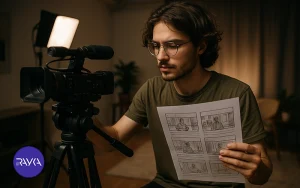
Creating a short documentary allows you to capture an important or inspiring subject with less time and cost. Because of their brevity, short documentaries are more engaging for audiences and give filmmakers an excellent opportunity to strengthen their storytelling and production skills. In today’s fast-paced world, where attention spans are shorter, the short documentary has become one of the best formats for delivering a strong and impactful message.
A short documentary is a nonfiction film that tells a real story or explores a particular subject in a limited amount of time.
Typically ranging from 5 to 30 minutes, short documentaries focus on one subject with a realistic approach. Unlike feature-length documentaries, which can last hours and cover multiple layers of a topic, short documentaries concentrate on a single theme. They are often produced for festivals, social media, and online platforms, offering quick and powerful impact.
There are several reasons why short documentaries are a popular choice among both emerging and experienced filmmakers:
The foundation of a successful documentary lies in selecting the right subject. It should be both engaging for the filmmaker and valuable for the audience. Social issues, cultural stories, historical events, or even everyday lives can be powerful themes. Conducting initial research ensures the narrative remains authentic and credible.
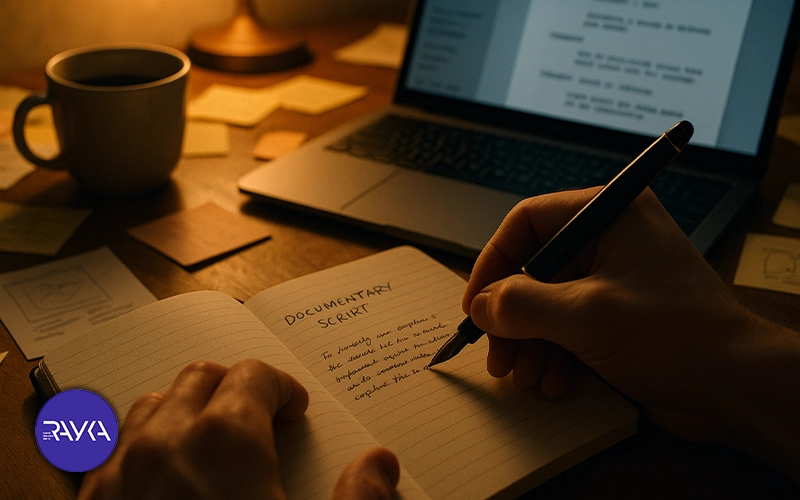
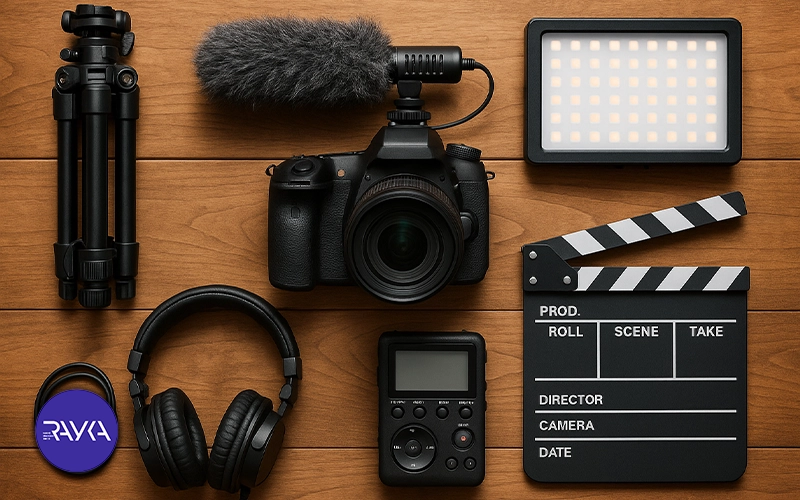
Without a clear plan, the narrative may lose direction. Developing a treatment, logline, storyboard, or shot list helps guide production and avoids confusion during filming and editing.
This stage is all about preparation—organizing the project, planning the schedule, and managing costs.
This is the heart of the process—capturing footage and sound.
This is the heart of the process—capturing footage and sound.
RaykaMah Iranian Agency is recognized as a pioneer in producing short documentaries using artificial intelligence.
Today, parts of the filmmaking process can be streamlined with AI tools—archival imagery, scene recreation, narration, and visual effects can be generated more efficiently, reducing costs and accelerating production.
Rayka Mah has successfully showcased its AI-driven works internationally, receiving prestigious awards such as:
These achievements highlight Rayka Mah’s ability to combine creativity, technology, and artistry in professional short documentary production.
Strong subjects are the backbone of compelling documentaries. Ideas can be drawn from:
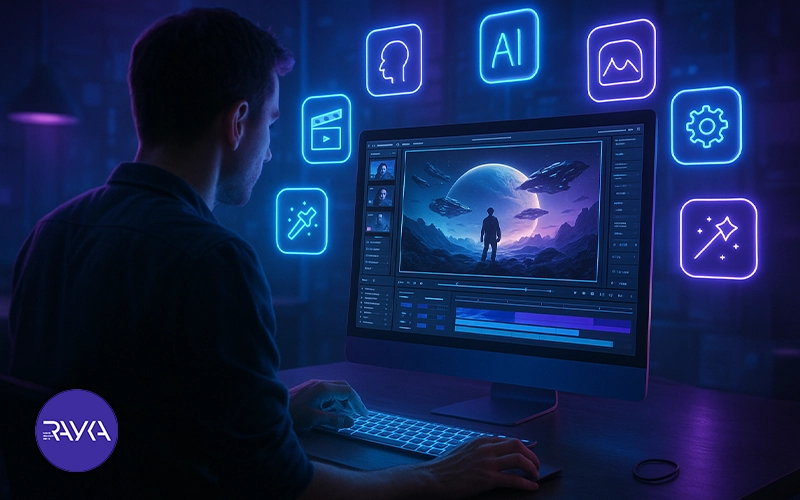
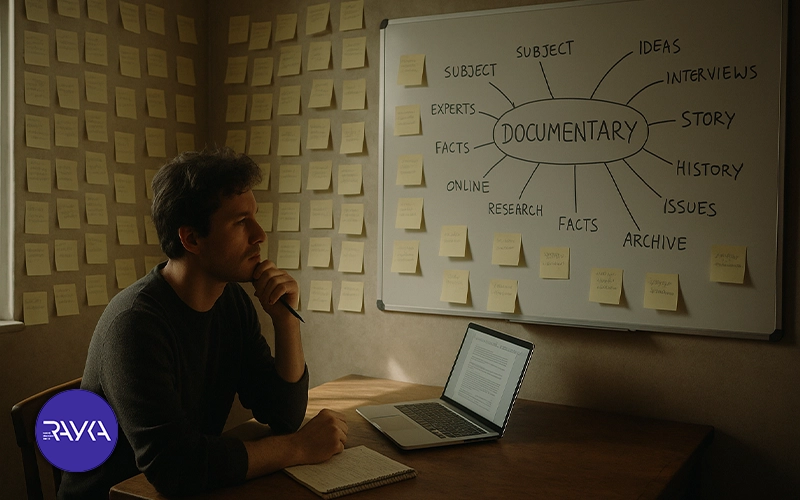
A short documentary is a great option for filmmakers because it requires less time and budget, offers high flexibility, and creates a fast impact on the audience.
Creating a short documentary comes with multiple advantages that make it a popular choice for both beginner and professional filmmakers. The table below provides a complete overview of these benefits:
| Advantage | Description |
|---|---|
| Lower Cost | Requires fewer resources and a smaller crew, reducing production expenses. |
| Shorter Production Time | Takes less time to make compared to feature-length documentaries, reaching results faster. |
| Audience Appeal | The shorter format captures attention quickly and keeps viewers engaged. |
| Practice and Learning | An excellent opportunity to develop skills and test ideas without high risk. |
| Easy Distribution | Can be shared on social media, online platforms, and film festivals. |
| Quick Message Delivery | Allows important and social topics to be communicated concisely and effectively. |
Producing a short documentary requires collaboration among different individuals, each with defined roles that contribute to the success of the project.
To create a professional short documentary, you need a team of skilled and well-coordinated members. Each plays a specific part, and their teamwork ensures high-quality results. The main roles include:
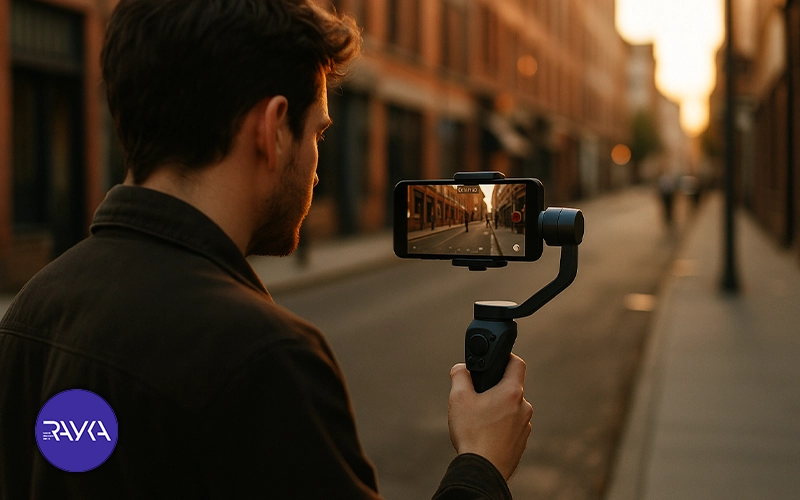
Yes, it is possible to produce a short documentary using a smartphone, though quality and technical capabilities are more limited compared to professional equipment. AI tools can help enhance the final outcome.
Modern smartphones with high-resolution cameras allow filmmakers to create short documentaries, especially suitable for beginners or low-budget projects. Smartphones are easy to carry, enable quick shooting, and reduce costs.
However, there are limitations: image and sound quality may not match professional cameras, lighting control is restricted, and additional accessories such as gimbals or external microphones might be required.
Artificial intelligence can help overcome some of these challenges by improving audio, enhancing color, refining image quality, and even generating archival visuals, bringing smartphone-made documentaries closer to professional standards.
Creating a short documentary is an excellent opportunity to practice filmmaking skills and deliver powerful messages quickly to an audience. It is a strong medium for telling real and impactful stories.
By following the key stages of production—from research and subject selection to post-production and distribution—you can create a professional and compelling short documentary. Even with simple tools like a smartphone, combined with the smart use of AI, the final product can reach a higher level of quality.
Starting with short documentaries not only provides hands-on experience but also boosts creativity, strengthens skills, and engages audiences with meaningful and visually appealing content.